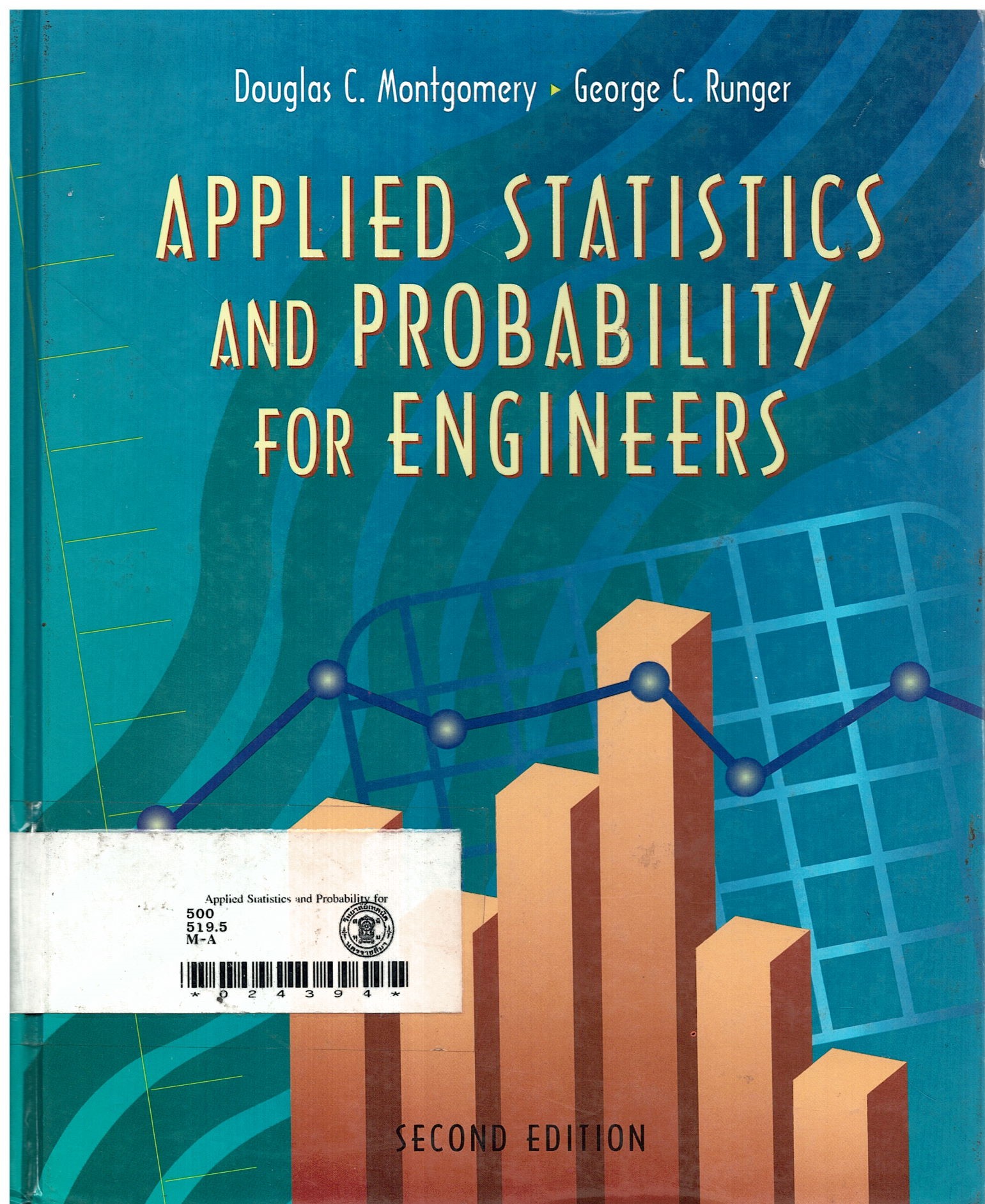ข้อมูลทรัพยากร

Applied Statistics and Probability for Engineers.
ประเภททรัพยากร : หนังสือเล่ม
ชั้นเก็บ : ตู้ 9 ชั้น 4 ฝั่งขวา
หมวด : 500
เลขหมู่หนังสือ : 519.5
สำนักพิมพ์ : John Wiley & sons
ผู้แต่ง : Montgomery, Douglas
ยอดคงเหลือ : 1
เนื้อหาย่อ : American industry must continue to improve the quality of its products and services if it
is to continue to compete effectively in both domestic and world markets. A significant
portion of this quality improvement effort will be driven by engineers and scientists,
because these are the individuals who design and develop new products and manufacturing
systems and processes, and who improve existing systems. Statistical methods are an
important tool in these activities because they provide the engineer with both descriptive
and analytical methods for dealing with the variability in observed data.
This is an introductory textbook for a first course in applied statistics and probability
for undergraduate students in engineering and the physical or chemical sciences. While
many of the methods we present are fundamental to statistical analysis in other disciplines,
such as business or management, the life sciences and the social sciences, we have elected
to focus on an engineering-oriented audience. We believe that this approach will best
serve engineering students and allow them to concentrate on the many applications of
statistics in these disciplines. We have worked hard to ensure that all of our examples
and exercises are engineering-based, and in almost all cases we have used examples of
real data--either taken from a published source or based on our consulting experiences.
We believe that engineers in all disciplines should take at least one course in statistics.
Unfortunately, because of other requirements, most engineers will only take one statistics
course. We have written this book so that it could be used for a single course, although
we have provided enough material for two courses in the hope that more engineering
students will see the important applications of statistics in their everyday work and elect
a second course. We believe that this book will also serve as a useful reference.
ORGANIZATION OF THE BOOK
We have retained the relatively modest mathematical level of the first edition. We have
found that engineering students who have completed one or two semesters of calculus